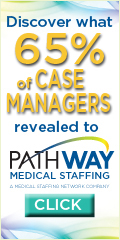
| Archives/Subscribe | Advertise | cmsa.org | cmsa.org | cmsatoday.org | September 2011 |
Helping Patients Understand and Navigate Healthcare Reform  Pat Stricker, RN, M Ed Pat Stricker, RN, M EdSenior Vice President TCS Healthcare Technologies When Congress was considering passing the Patient Protection and Affordable Care Act (PPACA), then House Speaker Nancy Pelosi (D-CA) quipped in a speech: "But we have to pass the bill so that you can find out what is in it." Although many poked fun at the Speaker’s comment at the time, the reality is that Pelosi was right. We are still finding out what is in PPACA, even 18 months after its passage! A key challenge facing case managers, health plan administrators, providers and other stakeholders is that many people who would potentially benefit from PPACA’s future benefits and entitlements do not understand the details of the new law. And how could we expect them to understand, when we (healthcare professionals) don’t even understand it yet? This confusion was highlighted in an August 2011 poll released by the Henry J. Kaiser Family Foundation. The researchers noted: Despite the fact that (PPACA) is expected to expand coverage to 32 million of the uninsured, only half of those currently without coverage report being aware of the key components of the law designed to achieve this goal: the expansion of the Medicaid program and subsidies for low and middle income Americans without insurance. Perhaps tied to this lack of awareness, almost half of the uninsured expect the (PPACA) will have little impact on them personally, and just three in ten believe the new law will help them get health care. Among Americans as a whole, views on the (PPACA) remain roughly divided, as they have for most of the past year. At first blush, these findings are surprising given the amount of press this issue has generated over the past several years. On the other hand, the dynamic nature and complexity of PPACA precludes the use of simple sound bites to explain the new programs that are being developed and implemented. This is where case managers come in. As we approach the big implementation date of 2014, we will be in a unique position to help our patients stay informed on the upcoming changes. This includes being able to explain:
The first place we should start is on the CMSA website. The Policy Makers page highlights the specific activities and regulatory initiatives our Public Policy Committee has been working on. It also includes Quick Links to other websites. For example, the "Health Reform" link goes to the new HealthCare.gov website that provides detailed information about: (1) insurance plans, public programs, and community services; (2) healthcare law and what it means to individuals; (3) tools to compare providers; and (4) information on prevention/wellness. The "Comparisons of Major Reform Proposals" link provides the "basics" of healthcare reform and more Quick Links. These are only two examples of the helpful information CMSA has compiled to help us quickly and easily find the information we need. We have a wealth of information at our fingertips -- all we have to do is find the time to use it. Other resources are available from health plans and government agencies. For example, CMS recently announced a new Quality Care Finder tool that helps consumers easily access information about the quality of care and services offered by healthcare providers. It compares hospitals, nursing homes, home health agencies, dialysis facilities, physicians, and Medicare plans. The new portal is geared to Medicare beneficiaries, but can be used by anyone. Can you even imagine having to research and find this information in the "olden days" when everything was in printed format? Just think how long it would take to get this information into printed format and then how difficult it would be to search for it. Isn’t technology wonderful (sometimes)? Without a doubt, we live in exciting times. The role of healthcare coaches will only grow and expand as the U.S. healthcare system continues to change and evolve. Ensuring that patients are informed decision-makers and are fully engaged will continue to be a primary objective of our mission as case managers. In fact, case managers may be in the unique position to connect all of the dots. Are you ready for the challenge? |
|
| The leading membership association providing professional collaboration across the health care continuum. 6301 Ranch Drive | Little Rock, AR 72223 | Phone: (501) 225-2229 | Toll-Free: (800) 216-2672 | Fax:(501) 221-9608 Secure Fax Line for Credit Cards: (501) 421-2135 | Email: cmsa@cmsa.org | Website: www.cmsa.org |





